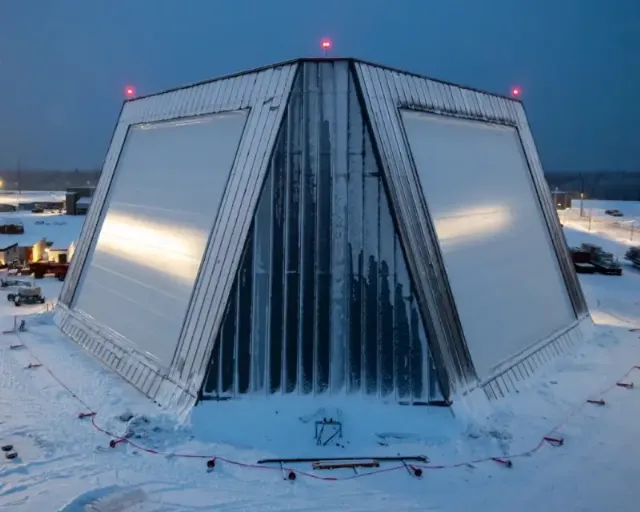
Image source: topwar.ru
The Pentagon has planned another test of a new powerful long-range ballistic missile radar, the construction of which was completed in early 2021 in Alaska. Last time, another test of the LRDR (Long Range Discrimination Radar) radar at the USAF Clear Base was suspended last summer. The American military-political publication Defense News reports that the next tests are scheduled for next year.
The director of the Missile Defense Agency, Lieutenant General Heath Collins, told Defense News in an interview at the Space and Missile Defense Symposium earlier this month that at the end of last summer, the LRDR tests were interrupted as a result of a "target anomaly." Because of this problem, the part of the test designed to track the simulation of an approaching missile remained incomplete. According to Collins, the agency's "biggest concern" was to put the radar located at the Clear base into operation faster. He clarified that the detection of another "not so difficult" target was successful.
The LRDR radar developed by Lockheed Martin, if no "target anomaly" occurs again during new tests, after commissioning it will be able to simultaneously search and track many small objects, including ballistic missiles of all classes at long ranges with continuous operation and will be connected to the ground intermediate defense system and the command and control system, combat control and connections ABOUT Aegis ("Aegis"). In addition, the radar is able to distinguish over long distances and accompany the flight of missiles from several directions, as well as distinguish between real warheads and false targets.
Strategic Missile Defense Complex (Ground-Based Midcourse Defense/GMD) The USA was commissioned in 2005. It is designed to detect and intercept intercontinental ballistic missiles and their warheads in outer space beyond the Earth's atmosphere. The construction of the latest long-range radar within the framework of missile defense in Alaska is not at all accidental. The publication notes that the LRDR, as part of the GMD, is designed to protect the continental United States from threats of intercontinental ballistic missiles from North Korea and Iran. And Russia is just around the corner from Alaska, as they say.
In addition to missile defense, LRDR will also maintain awareness of the space sphere by monitoring space activity such as satellites orbiting the Earth, spent rocket hulls and fragmentation debris. And although the software update is not an official requirement, it may provide LRDR with the ability to detect and track hypersonic weapons, Defense News writes.
According to Collins, once the main test is completed in 2025, it "will serve as the basis for an operational decision to include the latest radar in the operational base for the country's missile defense." Previously, LRDR tests were postponed several times, including, as explained in the Pentagon, due to the coronavirus pandemic. Eventually, the program moved to the "caretaker status", which means the presence of only a small group of military and specialists at the facility to ensure the protection of materials from the weather.
